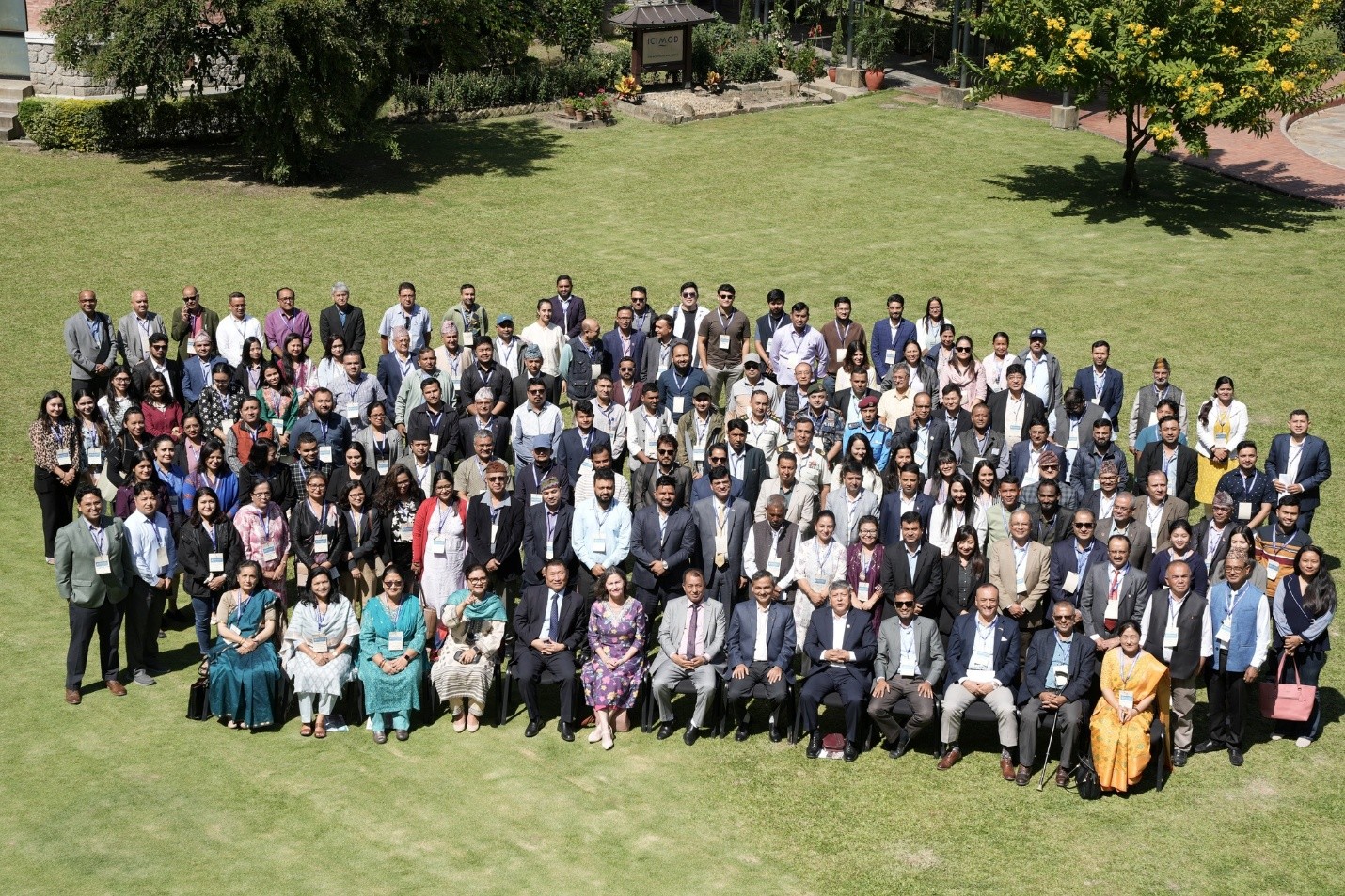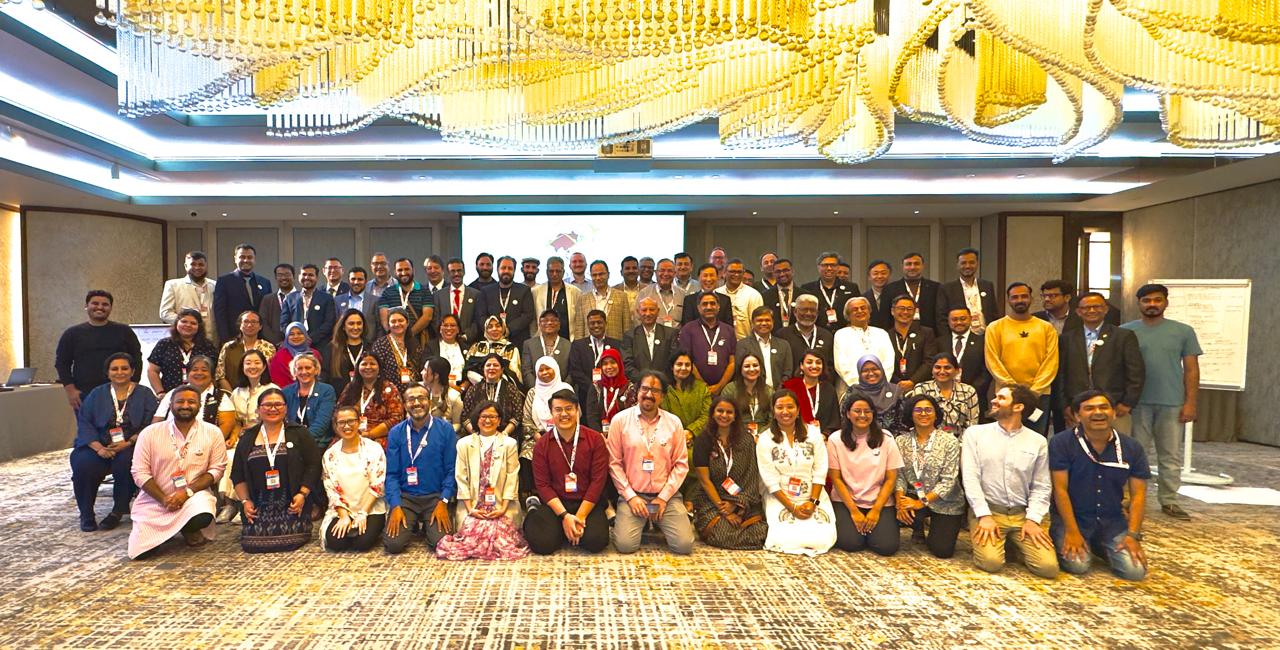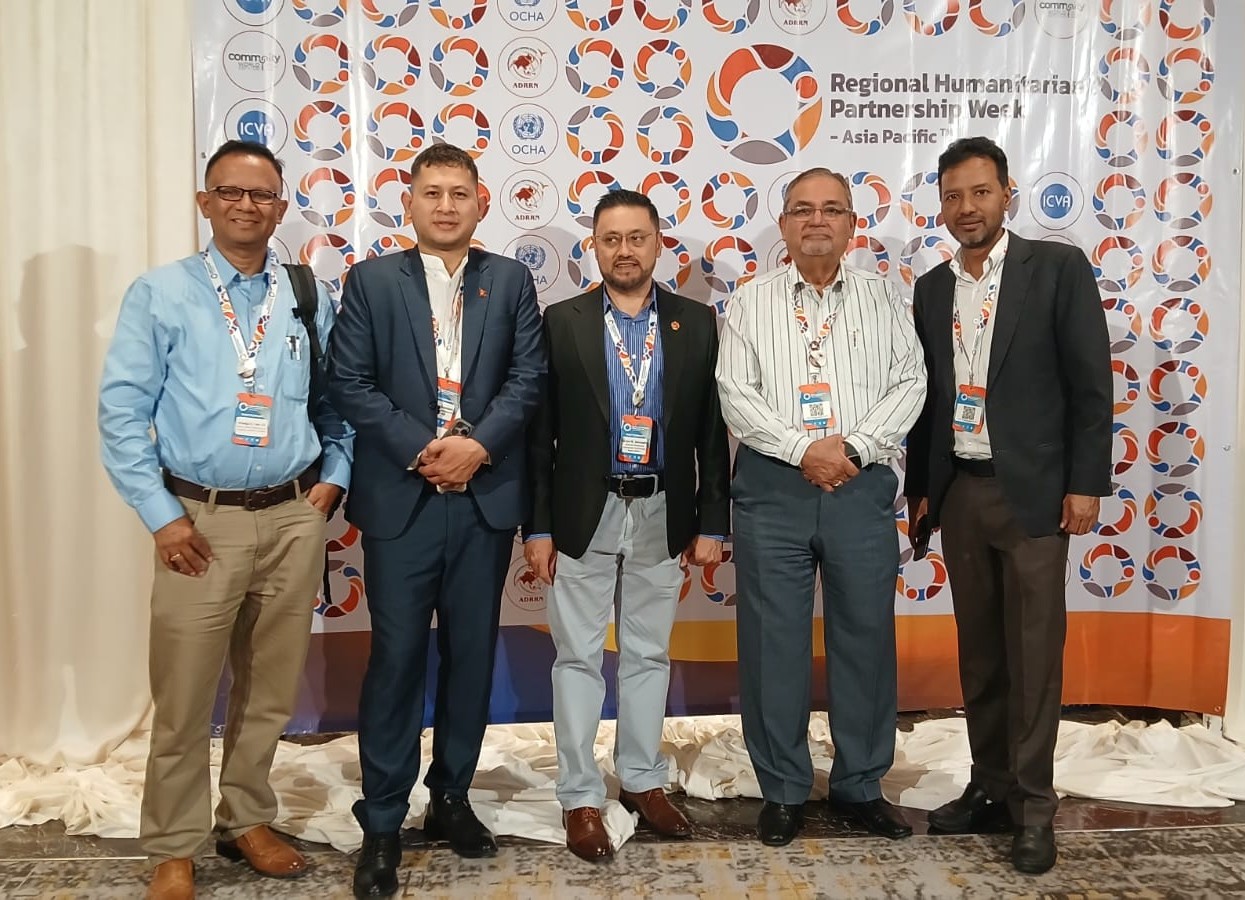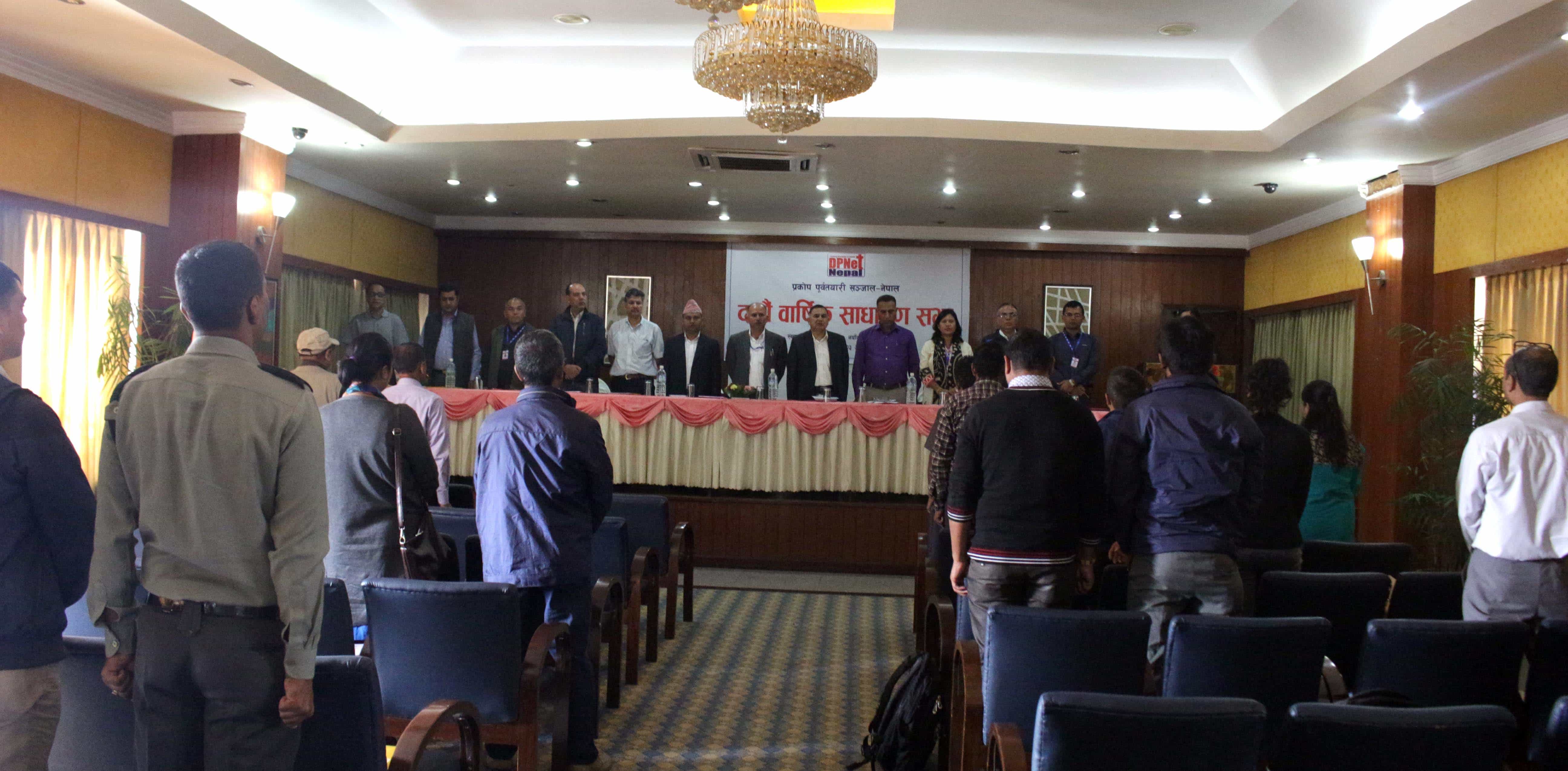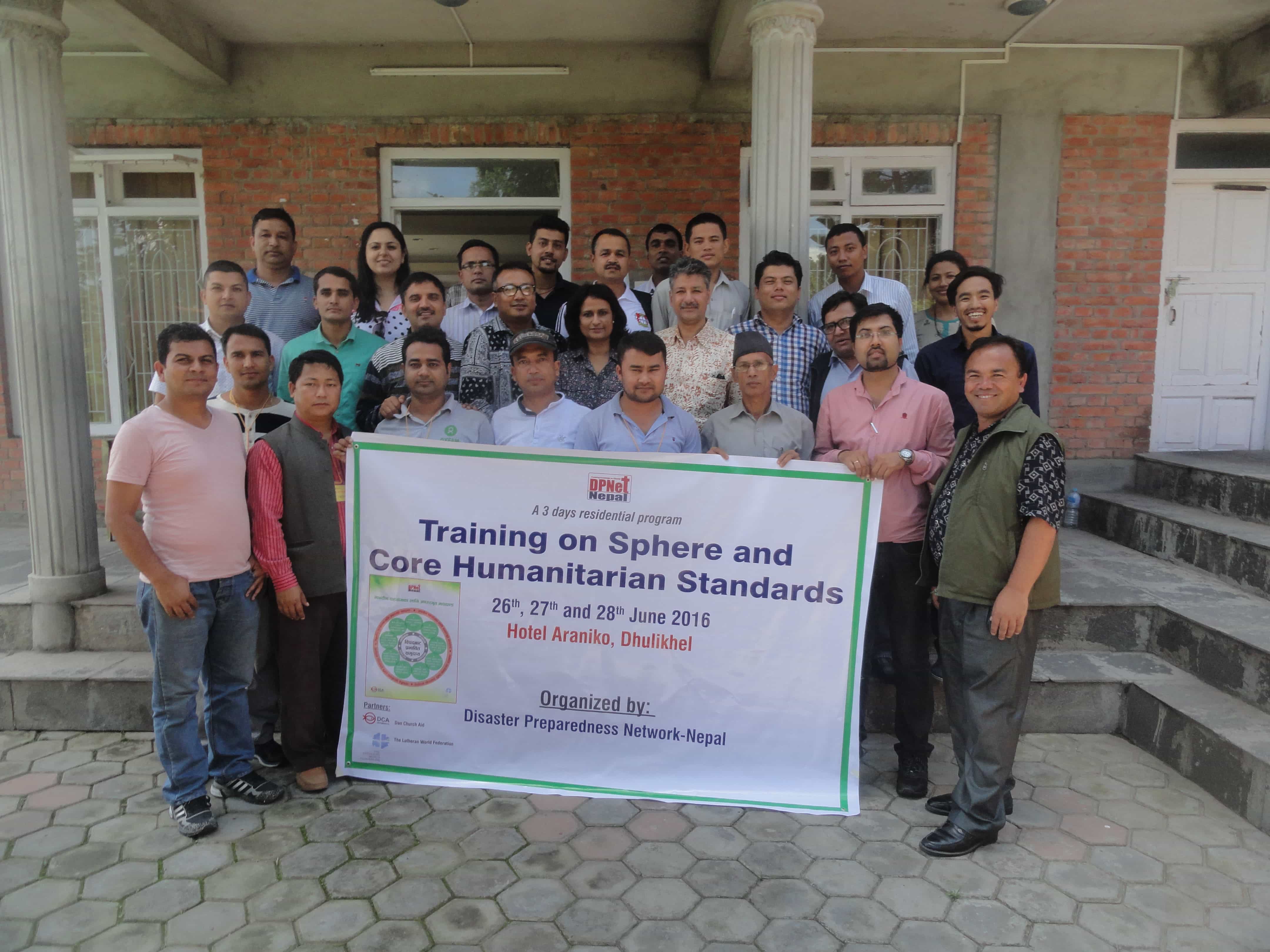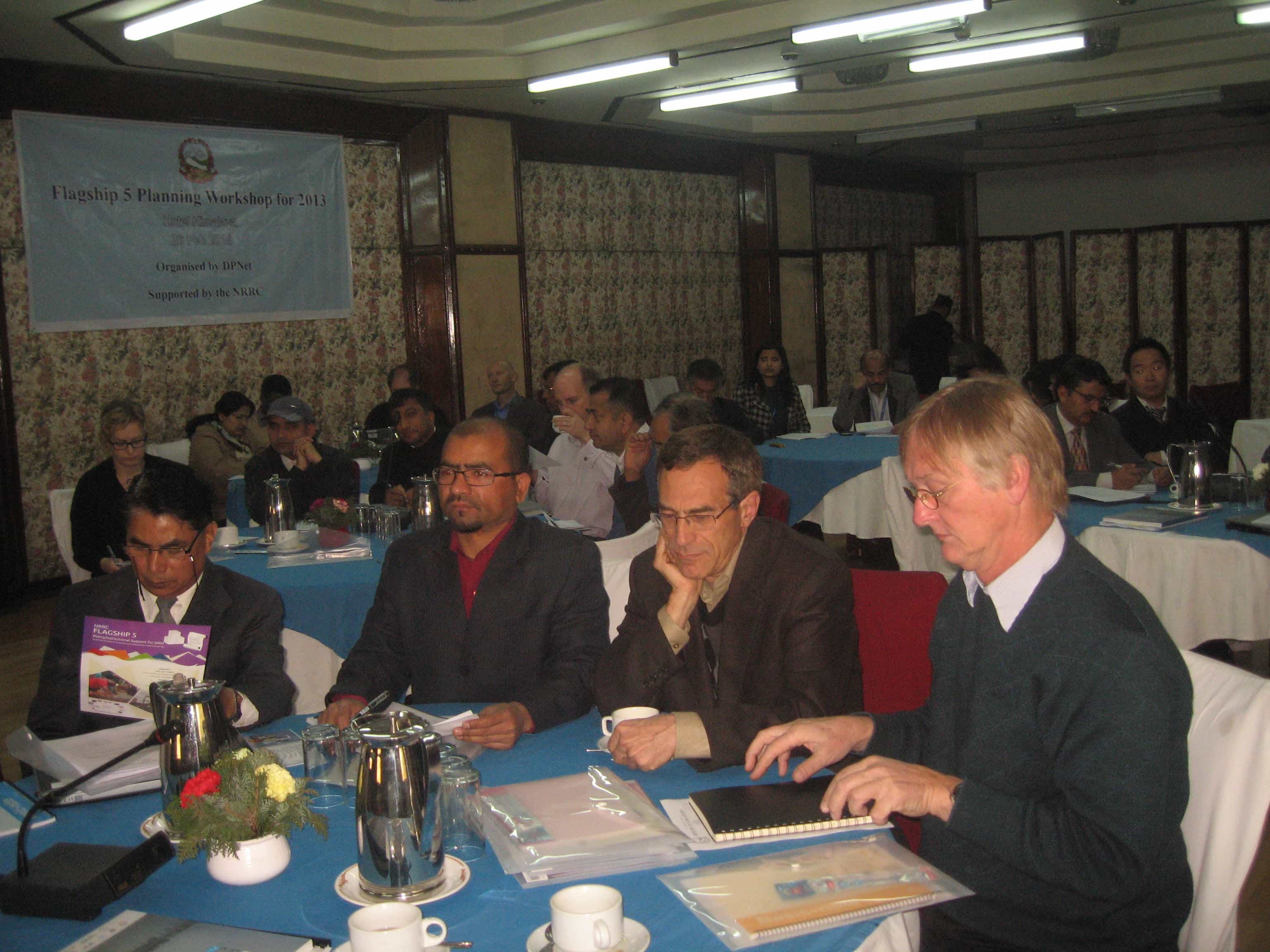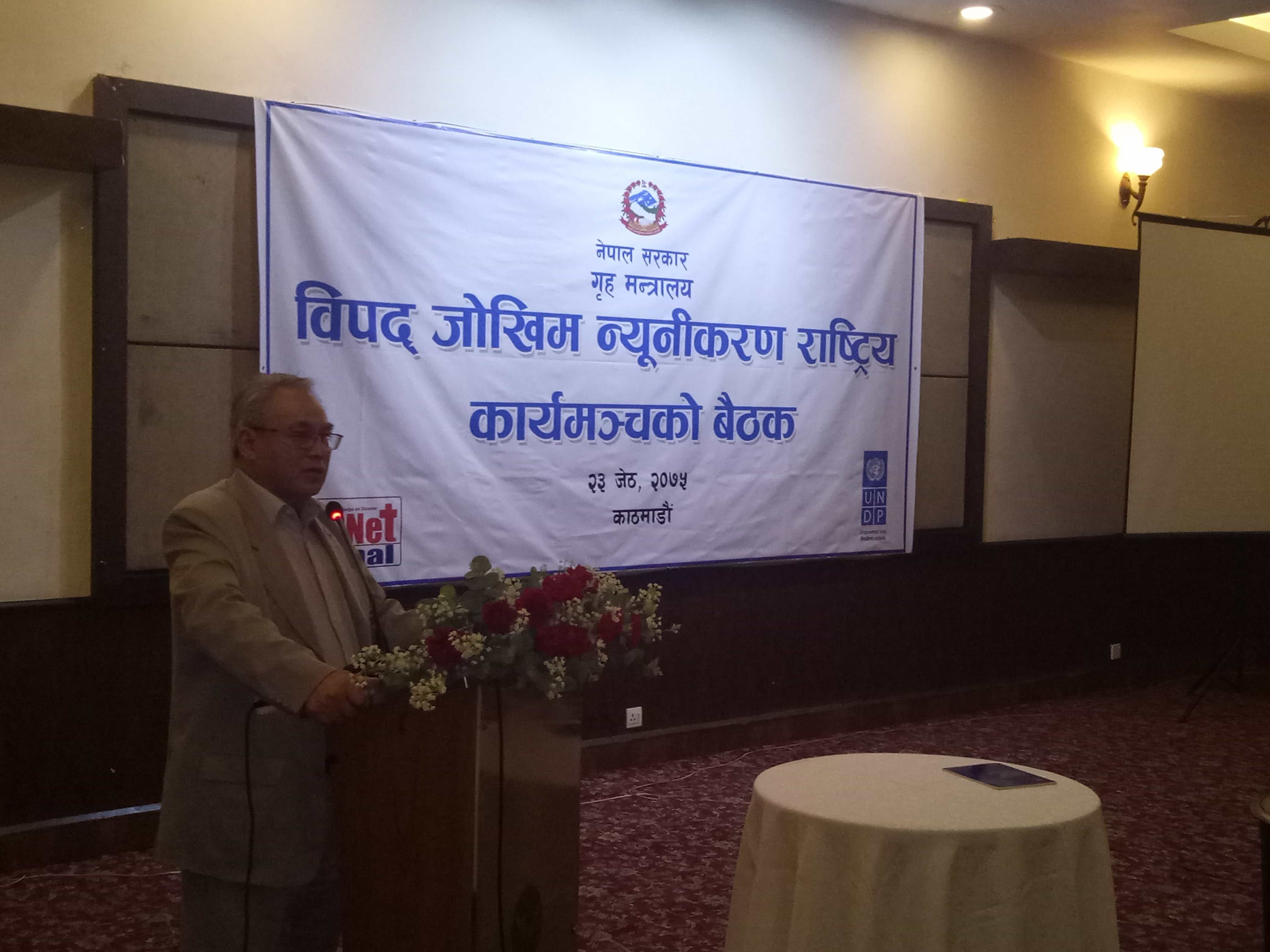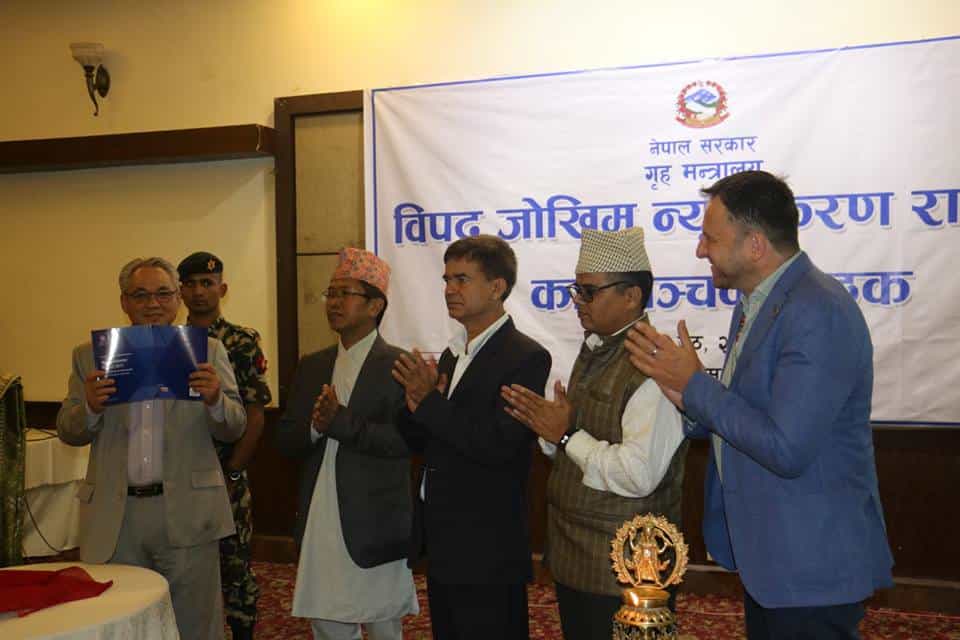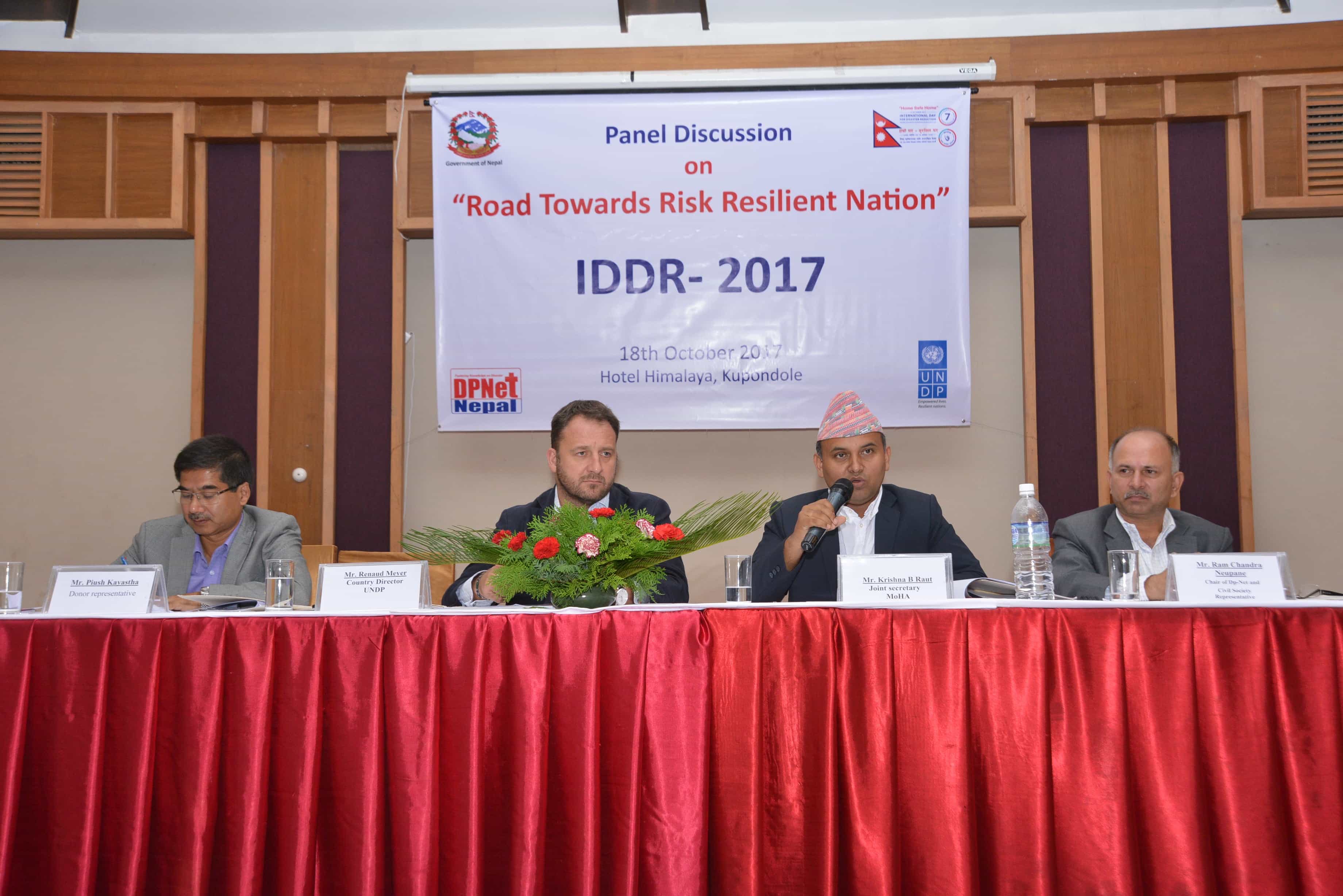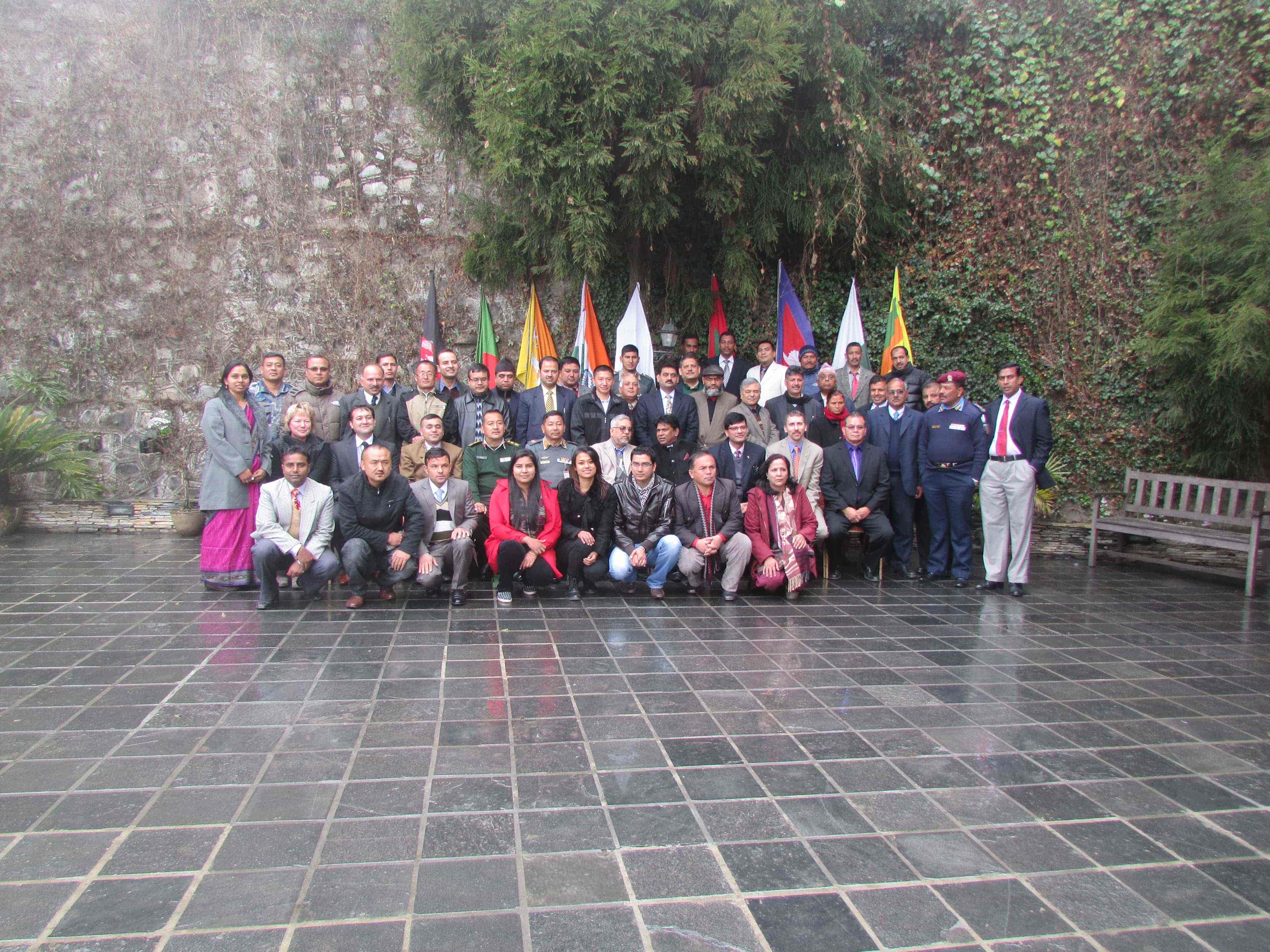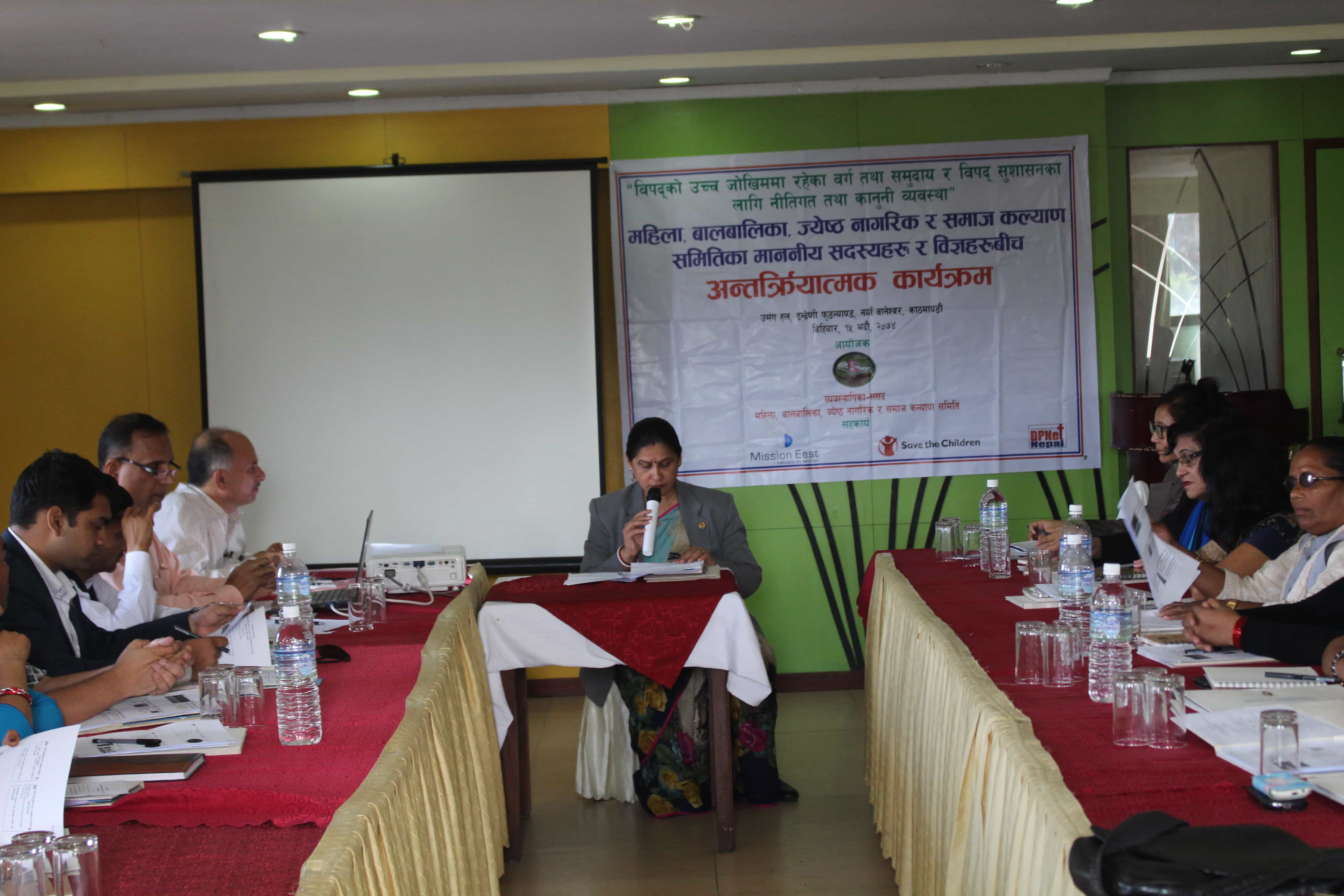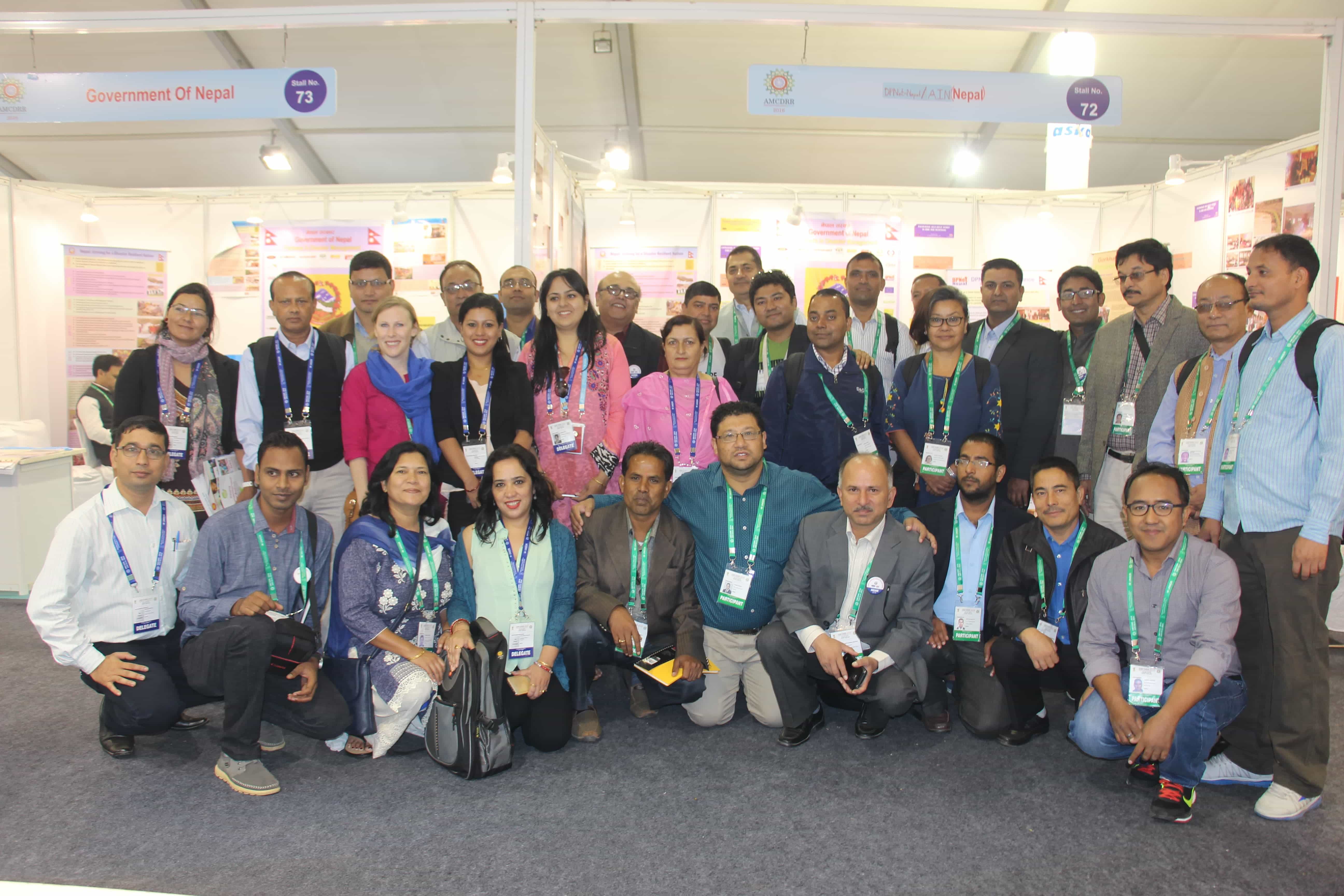Discussion Program on Strengthening Disaster Communication through Media and Information Sharing on Heat Wave
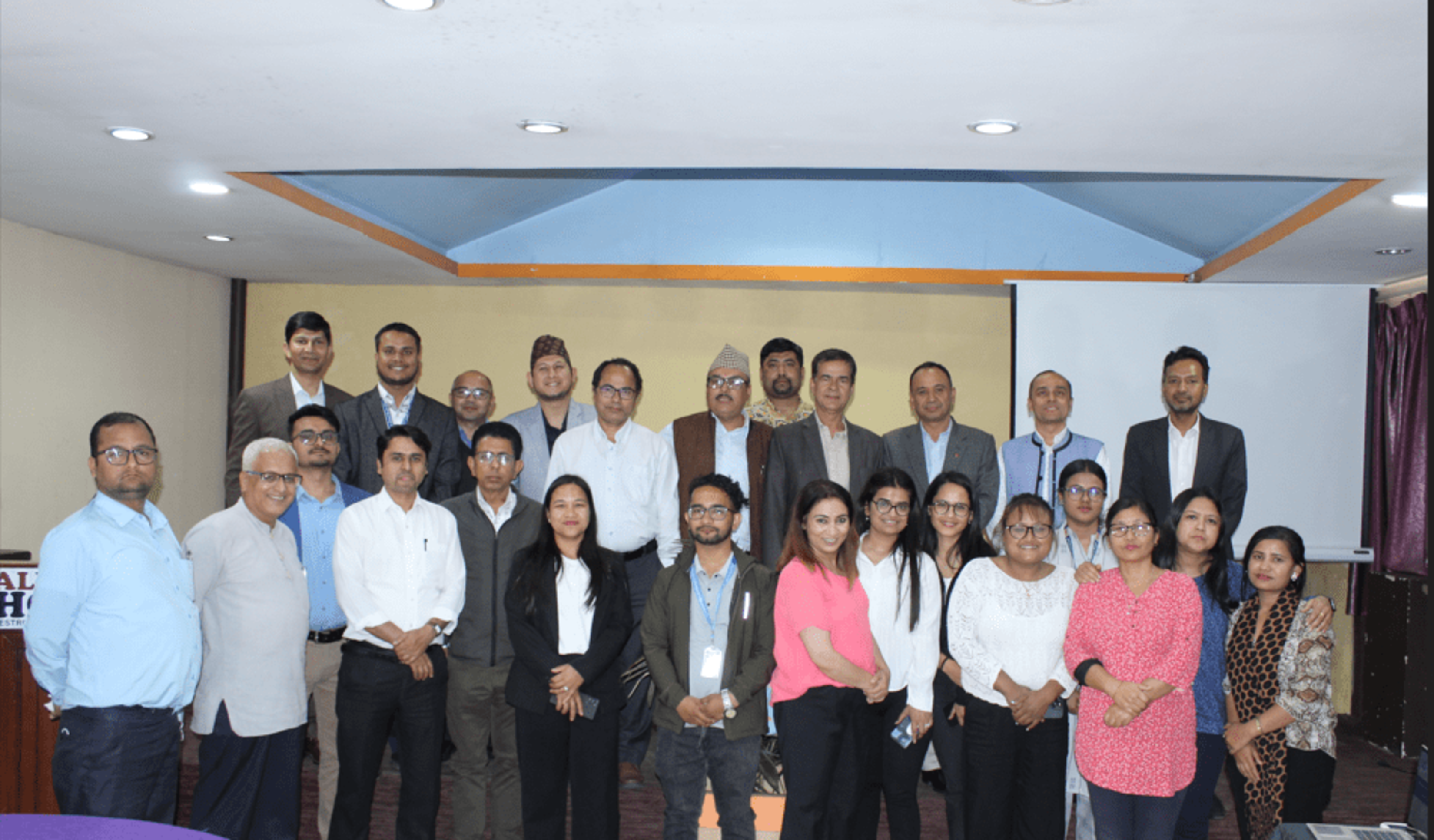
On April 5th, 2024, DPNet organized a significant discussion program titled "Strengthening Disaster Communication through Media and Information Sharing on Heatwave." This program was conducted in a hybrid format with financial and technical support from the Start Fund Network- FOREWARN and the Institute of Himalayan Risk Reduction (IHRR). Dr. Raju Thapa, Chair of DPNet, chaired the program, which was attended by distinguished guests including Mr. Kedar Neupane, Former Secretary of the Government of Nepal, Mr. Prakash Adhikari from National Disaster Risk Reduction and Management Authority (NDRRMA), Dr. Samir Adhikari from the Ministry of Health and Population (MoHP), Mr. Govind Kumar Jha from the Department of Hydrology and Meteorology (DHM), Mr. Niroj Sapkota from Start Fund Nepal, as well as representatives from stakeholder organizations and members of the media.
The program was facilitated by Mr. Suraj Gautam, General Secretary of DPNet, with opening remarks delivered by Mr. Surya Bahadur Thapa, Immediate Past President of DPNet Nepal. Mr. Thapa expressed gratitude to the participants for their presence and extended a warm welcome to all. Emphasizing the significance of media in Disaster Risk Reduction (DRR) efforts he outlined the aim of the discussion, which was to exchange experiences and insights on the impact of seasonal changes, particularly as summer progresses, on the community.
Mr. Kedar Neupane, Former Secretary of the Government of Nepal and DPNet Advisor, conveyed his affinity for the media, highlighting its crucial role as a bridge between service providers and receivers. He emphasizes that the media should not only highlight the limitations of institutions but also acknowledge and praise their positive actions. Mr. Neupane shared a childhood story about how during the summer season, rising temperatures would prompt automatic school closures and even leading students to study under trees in the mornings to minimize the effects of heat.
Dr. Raju Thapa, Vice Chair at DPNet Nepal shared his presentation and highlighted the importance of coordination among all the stakeholders. Dr. Thapa emphasized the effort of DPNet in the preparations and publication of Earthquake situation analysis reports daily and monthly basis during the time of Bajhang and Jajarkot Earthquakes. He emphasized the context of the media's role in DRR, and even acknowledged that we have provided less space to the media, which has to be highly realized. He explained that DPNet serves as the secretariat of NPDRR, which comprises nine thematic groups including UN and donor organizations, NGOs, media, academia, research institutes, INGOs, affected communities, government, semi-government, and private sectors. Among these, the media group plays a crucial role in facilitating coordination among national and international stakeholders. Media's significance lies in situation evaluation and timely dissemination of information following disaster events. From the data of Nepal Media Association 2022, he noted that 90% of people have access to social media, while only 5% fully trust its content. Similarly, 49% have access to television, but only 35% trust its contents. He also shared insights into Nepal's seismic positionality in terms of earthquakes. He illustrated that we are in the hyperactive seismic activity zone. In the western part of Nepal, there exists a seismic gap of around 500 years. In an earthquake measuring approximately 6.4 on the Richter scale, 74,000 households were vulnerable to be affected. However, in the case of an 8.0 magnitude earthquake, the impact would be 251 times greater. Therefore, planning for the western part of Nepal should be based on this understanding. Past experiences indicates that the effects of earthquakes seem to be more influenced by human-made structures rather than solely by natural causes and geographical position. In Bagmati province, based on different scenarios; 58000 can be hampered in worst case was even shared by Dr. Thapa citing Durham and NSET research.
He also discussed the traditional use of round stones in house construction and posed a critical question: "Are we prepared for future dangers?" Additionally, he emphasized the various types of housing structures prevalent in Nepal, not only within the Kathmandu Valley but also outside, such as the Ghantauke houses. Dr. Thapa highlighted the dangers posed by the Karnali roadway, pointing out that while Nepal tends to express gratitude and joy when roads are constructed, but the risks associated with these pathways often go uncalculated and unrecognized. He also emphasized the significance of forestation and plantation initiatives. He acknowledged the cases of road accidents which is in increasing trend these days. He also shed light on other unaddressed issues in Nepal, such as transformers on pedestrian paths, electricity poles within the black-pitch roads, and low-level bridges above rivers. He urged for greater coverage of disaster-related issues and emphasized the need to raise awareness within the community and even commended media houses for establishing disaster beats, which play a crucial role. He advocated for the implementation of disaster beats in all media houses to effectively inform and educate the public.
Nirbesh Kumar Nepal, General Secretary, DRRM Platform, in his presentation, emphasized the pivotal role played by DRRM in connecting the public with various organizations and disseminating vital information during disasters. This is achieved through channels such as emergency alerts, public education campaigns, and media, which facilitates coordination among stakeholders. Given our vulnerability to disasters, addressing and writing about disaster-related issues is imperative. Mr. Nepal highlighted the media's role as a bridge between the public and various organizations, including the government. As the media operates around the clock and the Right to Information is constitutionally mandated, it holds significant importance. Its responsibilities include providing timely and accurate news, raising awareness, implementing alert systems, and educating the public. Moreover, the media facilitates crisis communication by delivering accurate information effectively and contributes to increasing international donations and resource mobilization. There's a need to establish disaster beats within media structures to monitor and network information effectively. Beyond advocating for accountability and addressing public issues, the media also provides mental and social comfort to individuals during challenging times. Mr. Nepal highlighted the importance of discussing how to move forward in tackling these challenges. The impact of the media is evident in providing instantaneous, trusted information, aiding decision-making, and addressing public health concerns. He also highlighted the importance of fostering closer linkages with disaster-mitigation communities and advocating for technological information exchange mechanisms.
In conclusion, equal access to crisis information, technological utilization, journalist training, and collaborative efforts are essential in reducing the risks of natural and human induced hazards and serving the global community effectively. He stressed the need to move beyond the common coverage of political or economic issues and normalize the inclusion of other forms of news on the front lines. While the media is considered the fourth pillar of the nation, this might not always be practically felt, particularly before and after the COVID-19 pandemic. Disaster journalism in Nepal plays a significant role in disaster management and reduction efforts. Developing a common online portal could ensure uniformity and facilitate the establishment of a central body for information dissemination. He addressed that it is crucial to leverage technology appropriately and ensure fair distribution of information, along with timely scheduling of training and capacity-building initiatives.
Mr. Hari Bahadur Thapa, DRRM emphasized the need to create contextual content on DRR. He pointed out the absence of a roster of experts and highlighted the consequences of unmanaged development, which often result in destruction. Additionally, he raised concerns about the economic scarcity faced by the media industry, stating that this issue also deserves priority attention.
Govinda Kumar Jha, Meteorologist, DHM provides a brief information about DHM and give an insight about the role of DHM as to safeguard lives and properties from hydro-meteorological disasters by fulfilling various objectives. These include contributing to the global exchange of meteorological data, issuing forecasts for public safety, mountaineering expeditions, civil aviation, and agriculture. Additionally, the organization conducts specialized studies to support policy-making and advance meteorological sciences in the region. It also seeks to foster relationships with both national and international organizations in the field of meteorology. Mr. Jha even illustrated the present activities performed by DHM as seasonal outlook, weekly weather outlook, 3-days weather forecast, 24-hour public weather forecast, urban city forecast, high altitude mountain forecast, fog forecast, and aviation weather forecast. He provided details from which the daily forecast can be tracked as from the official website of DHM, direct phone call at 01-4113191, Facebook page, twitter, email, and AMHS Aviation. media including FM, TV, and online media. He describes heat wave as a weather phenomenon when an abnormal temperature rises in a period more than the normal maximum temperatures that occur during the summer season. He highlighted that in 2023, a record-breaking heat wave affected 12 cities in Nepal. In his presentation, the map indicates red areas signify intense heat, which can be monitored through updates on the DHM website every 1-1 hour. Mr. Jha elaborates that heat waves in Nepal mainly occur from April to June, sometimes extending into July, with May and June being the peak months. Prediction is based on synoptic analysis and consensus from various numerical prediction models like WRF, GFS, and GEFS. Different categories of heat days are identified based on maximum temperature percentiles, ranging from hot days to extreme heat days, with consecutive occurrences defining the severity level. Notable records include Dhangadhi's all-time extreme temperature of 46.4°C on June 5th, 1995, and Nepalgunj's 45°C on June 16th, 1995. Additionally, he overview the health implications of heat waves and emphasized the importance of emergency preparedness. Plans are underway to create emergency kits containing essential items such as water bottles, umbrellas, and hats to mitigate dehydration and other health issues. Additionally, the discussion covered the Special Weather Bulletin and various heat wave terminologies aimed at enhancing understanding and preparedness.
Mr. Dharam Upreti, Thematic lead, Practical Action highlighted the increasing impact of climate change, evident in rising temperatures and changing sea levels. The temperature has risen by 1.2 degrees Celsius since the 18th century, largely due to the greenhouse effect. WHO and Indian meteorological data indicate that a heat wave is a condition that occurs if the maximum temperature of a station reaches at least 40 °C or more for the Plains and at least 30°C or more for Hilly regions. He shared an incident where temperatures consistently remained above normal from April to June, and a similar trend was expected for July to September. Mr. Uprety even provided a descriptive highlight on the measures which can be taken to avoid heat exposure and stay cool during hot weather. He recommended wearing lightweight, light-colored, loose-fitting cotton clothing and covering the head with a cloth, hat, or umbrella. Prevent dehydration by drinking sufficient water, even if you don't feel thirsty, and consider homemade drinks like lassi, lemon water, or buttermilk to stay hydrated. Avoid high-protein and stale foods, as well as alcohol, tea, coffee, and carbonated drinks, which can dehydrate the body. He even urged for ensuring that the animals have shade and access to plenty of water, to keep the houses cool by using curtains, shutters, or sunshades and opening windows at night. He also outlined a way forward, suggesting the implementation of Early Warning Systems to provide advance notice of heatwaves, enabling people to stay hydrated and avoid excessive activity. Establishing Public Cooling Centers would provide shelter for those unable to cool their homes adequately. Urban Design strategies, including green spaces and reflective surfaces, can mitigate the urban heat island effect. Using heat-resistant building materials and proper insulation can maintain cooler indoor temperatures. Long-term mitigation efforts should focus on reducing greenhouse gas emissions through renewable energy and sustainable practices. Water conservation measures are essential for combating drought conditions exacerbated by heat waves. Additionally, protecting ecosystems through conservation and reforestation can help regulate temperatures and mitigate the impacts of heat waves. He acknowledged that the Standard Operating Procedures (SOPs) should be prepared for heat wave-prone areas in Nepal, emphasizing the need for precautions to be taken during both daytime and nighttime warm temperatures.
Mr. Niraj Sapkota, Technical Specialist at Start Fund Nepal – FOREWARN, provided an overview of Start Fund Nepal, emphasizing its role in swiftly financing underfunded crises and proactively addressing imminent ones, thereby filling crucial gaps in humanitarian funding. The organization boasts 19 alert systems, 17 activations, and has aided 15,224 individuals, dispersing a total of $2.3 million across Nepal's seven provinces. Start Fund Nepal operates through localized, anticipatory, and rapid actions, focusing on timely forecasting and enhancing anticipatory measures to prepare for foreseeable crises. He provided a brief introduction to the Purwanuman Chautari, stating that it is the second session on heat waves following the first session on sheet lahar. Mr. Sapkota highlighted activities for anticipating heatwaves, including forming Technical Anticipatory Action Groups, engaging stakeholders, and issuing timely alerts. Plans involve actions before, during, and after heatwaves, prioritizing vulnerable communities and institutions like schools. He addressed that toolkits is prepared along with IHRR and CARE which also need ongoing validation. Attention is given to addressing the observed rise in heatwave occurrences, with interventions spanning from food distribution to awareness campaigns and infrastructure enhancements. He even shared that post-heatwave, there is a focus on reflective feedback and learning exchanges to bolster resilience, alongside ongoing data collection through platforms like Google Forms for advocacy and resource mobilization.
Ms. Kamala Panthi, Media Coordinator, NPDRR, mentioned that the media group was established three years ago and has since grown significantly. She emphasized that structural man-made hazards appear to be more hazardous than natural ones. Ms. Panthi elaborated on the vital role of media and urged for media sensitization to occur regularly.
Mr. Prakash Adhikari, Under Secretary, NDRRMA, expressed gratitude for organizing such an important program on disaster management. He emphasized the significance of all stakeholders working together to address disaster issues. While acknowledging the existence of various guidelines and policies on disaster management, Mr. Adhikari questioned whether these guidelines were equally effective during the post-disaster period. He commended the media for their tireless efforts in disseminating information and expressed hope for their continued support in the future. Highlighting the significant role of human negligence in causing destruction, he noted that approximately 80% of disasters are human induced. He additionally added that community based awareness and preparedness play significant roles on mitigating and combating the issue of disaster together.
Dr. Samir Adhikari, Under Secretary, MoHP, highlighted the adverse health effects of heat waves. He mentioned that even a slight increase in temperature can lead to a fourfold increase in effect. Conditions like dengue are greatly influenced by humidity and temperature fluctuations. Heatwaves contribute to the rise of foodborne and waterborne diseases, and eye problems, and exacerbate chronic health issues such as kidney, heart, and respiratory ailments. Mr. Adhikari emphasized that normally we have mentality hat heatwaves are commonly associated with communicable diseases, but they also significantly impact chronic diseases which is usually less awared of. Dr. Adhikari stressed the importance of addressing new challenges promptly, especially in remote areas. He emphasized the need for immediate action to prevent health issues, citing alarming statistics such as 4% of children doesn't get any form of vaccines, and daily occurrences of suicide which is 19 per day and 8-9 accidents on daily basis. He stressed on how could we able to combat this issue from the angle of disaster. He even praised media on Creating disaster beats which can be effective for prevention efforts in DRR. However, challenges like limited access to information and uncertainty about audience reach remain. Dr. Adhikari emphasized the importance of proactive measures, including psychosocial support, to address emerging issues effectively. Collaboration and strong community engagement were highlighted as crucial in facing these challenges. He also highlighted the need of information dissemination by the use of local language, accessible to right information at the right time, diagnosis of the channel which is appropriate to that specific community to enhance the information gathering. He also emphasized the importance of ensuring that disseminating information for awareness, such as stating that the western part of Nepal is more prone to earthquakes, might indirectly create psychological risks for the public due to fear of disasters.
Question Answers Session:
Mr. Nischal Sedhai, Human Development and Community Services, shared that the Disaster journalism and advocacy lack the issue of forest fire.
Mr. Surendra Pandey ,Chairperson, DRRM, shared that the lifeline communication systematization can be done for heat wave and cold wave.
Mr. Govinda Luitel, Setopati, requested to use the local terms for the better understanding.
Mr. Kedar Neupane, Advisor, DPNet, enhanced the need of practical forecasting system in daily life. He urged that the forecast system should be accessible to 3 crore population through the different medium like television and FM radio.
Mr. Suraj Gautam, General Secretary, DPNet Nepal, provided insights into the impact of heat wave, especially as summer advances, on communities. He stressed the crucial role of media in DRR and emphasized the necessity for sensitizing media personnel and DRR journalists, as well as promoting proactive disaster reporting. Furthermore, he highlighted challenges such as limited access to information and the importance of proactive community engagement. He also highlighted the significance of disseminating information in local languages and selecting appropriate channels for effective information gathering.
Closing Remarks:
In his closing remarks, Dr. Raju Thapa expressed gratitude to all participants, both in person and via the Zoom platform, for their valuable time. He assured collaboration with the DRRM media group in the future and thanked Start Fund Nepal for their interventions in anticipatory action, especially considering the current context of the heatwave.
